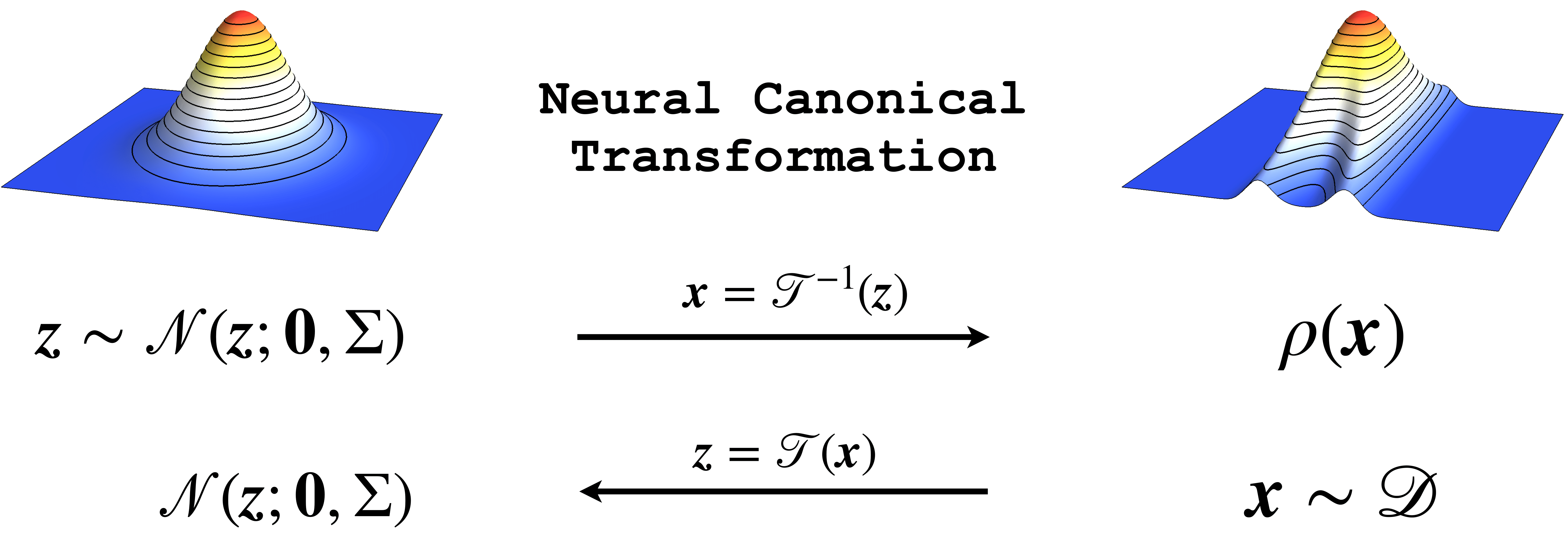PyTorch implement of the paper Neural Canonical Transformation with Symplectic Flows.
A symplectic normalizing flow learns slow and nonlinear collective modes in the latent space. The model reveals dynamical information from statistical correlations in the phase space.
Both pytorch and numpy are required, you can install them using anaconda.
If you want to run the following demos, you need to download savings and datasets from Google Drive. To do this run:
python download_demo.pyTo train a neuralCT for molecular dynamics data, use density_estimation_md.py
python ./density_estimation_md.py -batch 200 -epoch 500 -fixy 2.3222 -dataset ./database/alanine-dipeptide-3x250ns-heavy-atom-positions.npzKey Options
- -cuda: Which device to use with -1 standing for CPU, number bigger than -1 is N.O. of GPU;
- -hdim: Hidden dimension of mlps;
- -numFlow: Number of flows layers;
- -nlayers: Number of mlps layers in the rnvp;
- -nmlp: Number of dense layers in each mlp;
- -smile: SMILE expression of this molecular;
- -dataset: Path to the training data.
To see detailed options, run python density_estimation_md.py -h.
Analysis Notebook
To train a neuralCT for machine learning dataset, use density_estimation.py.
python ./density_estimation.py -epochs 5000 -batch 200 -hdim 256 -nmlp 3 -nlayers 16 -dataset ./database/mnist.npzKey Options
- -cuda: Which device to use with -1 standing for CPU, number bigger than -1 is N.O. of GPU;
- -hdim: Hidden dimension of mlps;
- -numFlow: Number of flows layers;
- -nlayers: Number of mlps layers in the rnvp;
- -nmlp: Number of dense layers in each mlp;
- -n: Number of dimensions of the training data;
- -dataset: Path to the training data.
To see detailed options, runpython density_estimation.py -h.
Analysis Notebook
To train a neuralCT via the variational approach, use variation.py. Specify the name of the distribution with the -source option.
python ./variation.py -epochs 5000 -batch 200 -hdim 256 -nmlp 3 -nlayers 16 -source Ring2dKey Options
- -cuda: Which device to use with -1 standing for CPU, number bigger than -1 is N.O. of GPU;
- -hdim: Hidden dimension of mlps;
- -numFlow: Number of flows layers;
- -nlayers: Number of mlps layers in the rnvp;
- -nmlp: Number of dense layers in each mlp;
- -source: Using which source, Ring2d or HarmonicChain.
To see detailed options, run python variation.py -h.
Analysis Notebooks
@article{neuralCT,
Author = {Shuo-Hui Li, Chen-Xiao Dong, Linfeng Zhang, and Lei Wang},
Title = {Neural Canonical Transformation with Symplectic Flows},
Year = {2019},
Eprint = {arXiv:1910.00024},
}For questions and suggestions, please contact Shuo-Hui Li at contact_lish@iphy.ac.cn.
